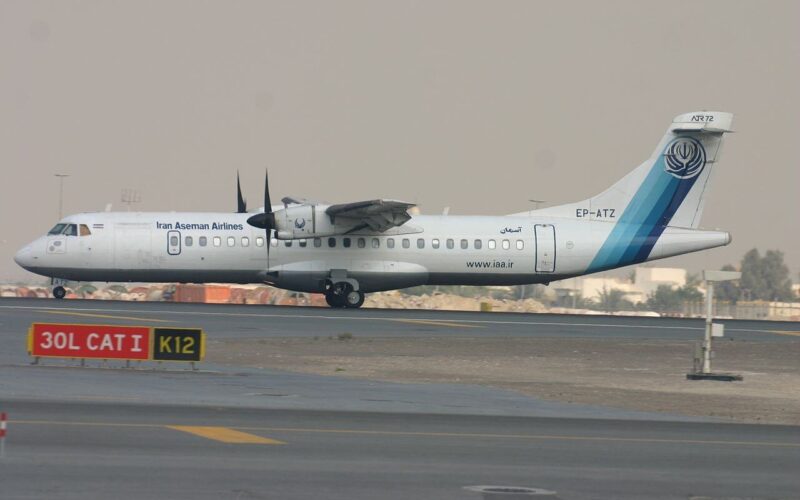Iran’s civil aviation accident investigation bureau (AIB) released an “interim” report on February 18, 2019, on the deadly crash of the Aseman Airlines ATR72 in Iran exactly one year ago. This new report confirms the initial conclusions of the investigation and points at a series of human errors.
The ATR72 operated by the Iranian company Aseman Airlines was performing a regional flight from the capital of Tehran to Yasuj, a city in the Zagros Mountains. The aircraft, carrying 60 passengers and six crew members on board, was about to land when it crashed in a mountainous area at about 4,000 meters (approx. 13,123 feet) of altitude, killing all 66 people on board. Heavy snow suspended the recovery operations for several days.
While the report points at multiple factors that led to the crash, “human factor” is considered as paramount. Among the errors listed, Iranian investigators stress the fact that the flight crew continued their approach towards Yasuj Airport (YES) despite the “low altitude ceiling of the cloud and related cloud mass”, which goes against the instructions of the company.
The second mistake indicated in the report is the failure of the flight crew to maintain correct altitude. After descending at 17,000 feet (approx. 5,182 meters) as demanded by air traffic control tower, the autopilot was set to 15,000 feet, despite the flight plan requiring to maintain an altitude of at least 17,000 feet.
According to the report, one of the pilots attempted to fly in unauthorized altitude to separate from the clouds with icing condition, approaching the mountains in unsafe altitude. The flight crew continued by shutting down the de-ice systems.
As the ATR72 approached the top of the mountain, the aircraft encountered what is known as a “mountain wave phenomenon” (the phenomenon, associated with strong vertical currents and icing, forms when strong winds blow across a mountain range). The plane then went into a stall before crashing onto the mountainous area.
The report indicates that the flight crew did not put the flap in correct position and did not apply maximum power (RPM). A lack of cockpit resource management was also noticed after the analysis of the cockpit voice recorder (CVR). “The CVR audio files showed that some recommendations of the first officer were not accepted/adapted by the pilot which denied the role of the first officer on the flight,” the report states. The first officer can be heard requesting for flaps to be set, request which was ignored by the captain.
Eventually, it seems that it was the flight crew’s inability to handle a stall recovery that doomed the flight and all of its 66 passengers and crew members. The report recommended that airlines provide a more thorough training for crews to react to phenomena such as a mountain wave, and a more adequate route planning.

